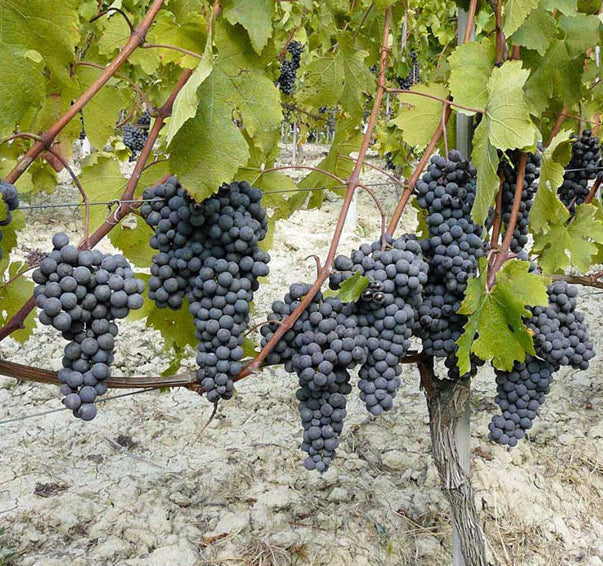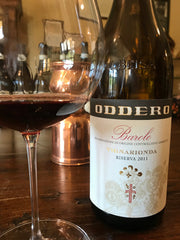Nebbiolo: The Noble Grape of Piedmont's Barolo

In the northwest of Italy, hidden in the hills of Piedmont, grows one of the world's most prestigious grape varieties: the Nebbiolo. Named for the characteristic mist ('nebbia' in Italian) that covers the grapes during harvest, this grape is the basis for the legendary Barolo wines, often affectionately called 'the king of wines and the wine of kings'.
The Characteristics of Nebbiolo
Nebbiolo is a demanding grape with a pronounced character. The grape is characterized by:
- Early emergence and late ripening, requiring a long growing season
- Thin skin but lots of tannins
- Light colour that does not reveal how powerful the wine is
- High acid content
- Complex aromatic profile with notes of roses, tar, truffle and cherries
The Terroir of Barolo
The Nebbiolo grape reaches its absolute peak in the Barolo DOCG, where several factors come together to create perfect growing conditions:
Soil
The best vineyards in Barolo are located on hills with:
- Calcareous marl soils, locally known as 'tortonian' and 'helvetian'
- Excellent drainage
- Various exhibitions, each giving its own expression to the wine
Climate
The microclimate of Barolo is characterized by:
- Warm summers
- Cool autumn days with misty mornings
- Protection from cold north winds by the Alps
- Large temperature differences between day and night
The Art of Winemaking
The vinification of Nebbiolo requires great craftsmanship. Traditionally, Barolo wines are characterized by:
- Long maceration periods to extract the tannins
- Extended maturation (minimum 38 months, of which 18 on wood)
- Careful selection of the type and size of the barrels

The Different Faces of Barolo
Within the Barolo area we distinguish different municipalities and 'cru's', each with their own characteristics:
- La Morra: elegant and aromatic
- Serralunga d'Alba: powerful and structured
- Castiglione Falletto: perfect balance between power and elegance
- Monforte d'Alba: rich and complex
- Barolo: combination of finesse and power
Evolution in the Bottle
One of the most fascinating aspects of Nebbiolo wines is their ability to age. A good Barolo can easily age for 20-30 years, evolving from:
- Youthful aromas of roses, violets and red cherries
- To complex notes of truffle, leather, tar and dried flowers
- With retention of fresh acids and refined tannins
Modern Developments
Although tradition is highly valued in Barolo, there are also modern developments:
- Shorter maceration times for more accessible wines
- Use of smaller new oak barrels
- Precision cultivation in the vineyard
- Adaptations to climate change
Gastronomy
The structure and complexity of Nebbiolo wines make them ideal for gastronomic pairings, especially with:
- Truffle dishes
- Wild
- Matured cheeses
- Richly spiced meat dishes
The Nebbiolo grape proves time and again that patience and tradition, combined with the right terroir, can lead to world-class wines. In a world where quick results are often the norm, this grape remains a monument to time, tradition and terroir expression.
Discover the beautiful wines made with Nebbiolo grapes in our range

